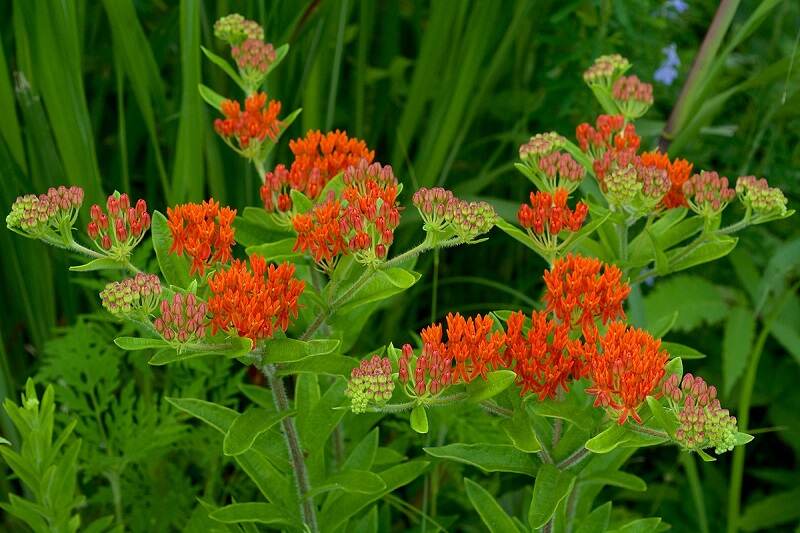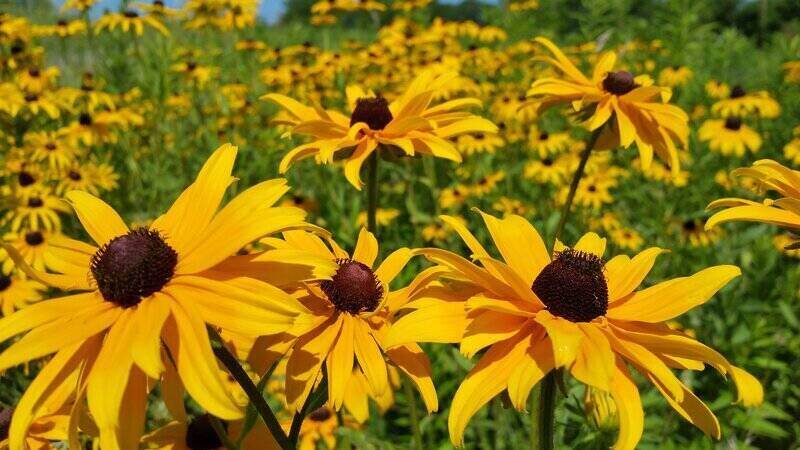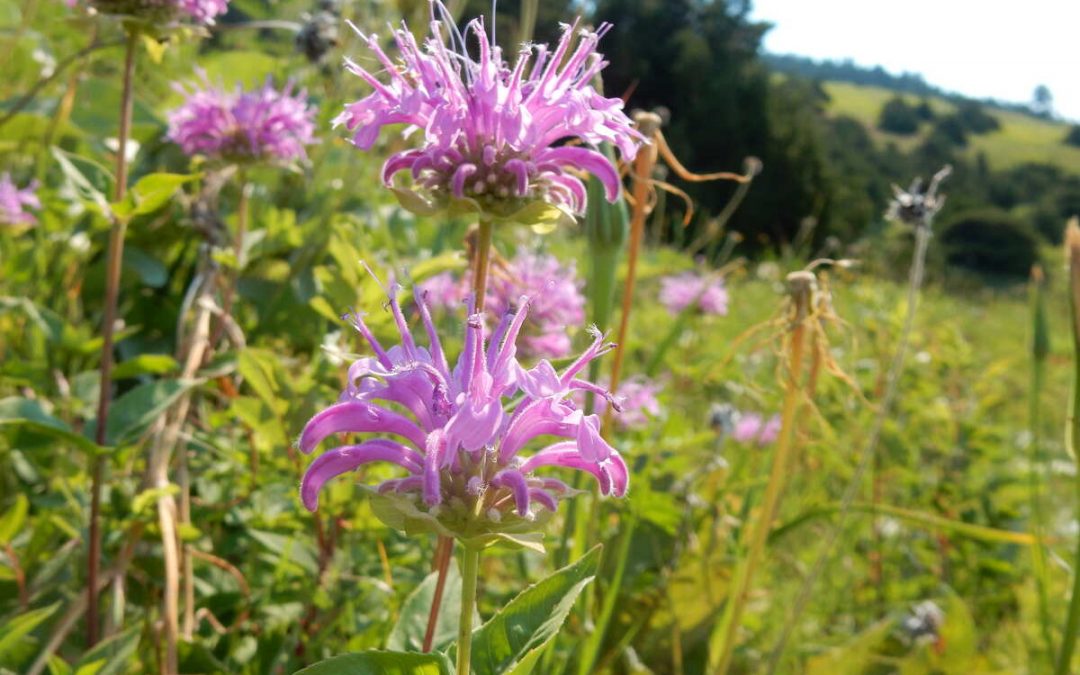There’s a reason that Baltimore has some of the most beautiful parks on the Eastern seaboard. It’s located in a temperate climate that supports an incredible array of plants.
But you don’t have to go to a park to experience all this natural beauty, though. Carefully landscaping your Baltimore yard with native plants gives you the best chance at establishing a yard that is both visually appealing and hardy.
But why native plants?
- Well-established native plants require little care. Because they are adapted to Baltimore’s climate, they can survive the city’s seasonal highs and lows with little care and fertilizer.
- Native plants resist disease and insects, so they need fewer pesticides.
- Native plants provide an ideal habitat that attracts beneficial birds and insects to pollinate trees and flowers.
Finding native plants that thrive in the garden can be difficult, as not all are suitable. That’s why we have compiled a list of 11 native plants for your Baltimore home and garden project.
What we’ll cover in this article:
- Wild Bergamot
- Cardinal Flower
- Butterfly Milkweed
- Turtlehead
- Southern Arrowwood
- Wild Red Columbine
- Smooth Blue Aster
- Blue-stemmed Goldenrod
- Black-eyed Susan
- Blue Sedge
- Cinnamon Fern
11 Native Plants for Your Baltimore Yard
1. Wild Bergamot (monarda fistulosa)

Photo Credit: U.S. Fish and Wildlife Service / Flickr / CC BY 2.0
Wild bergamot, also known as bee balm, is a popular ornamental perennial that produces clusters of lavender, pink or white flowers. It is one of the easiest wildflowers to grow, with beautiful blooms that last from mid to late summer. With its mint-scented leaves, bergamot is great for mint tea and bouquets.
Monarda fistulosa is very appealing to butterflies, hummingbirds, and native bees, which are helpful pollinators—probably why it is also called bee balm. This plant tolerates most soils and a partial shade to full sun location but should not be watered to avoid powdery mildew.
Growth habit: Flower
Mature size: 1.5 to 5 feet
Duration: Perennial
Foliage: Can range from light to deep green to red or purple tinted
Sunlight needs: Full sun or partial shade
Soil preferences: Clay, loamy
Water needs: Low to medium
Potential hazards: Non-toxic and no safety hazards
2. Cardinal Flower (lobelia cardinalis)

Photo Credit: rockerBOO / Flickr / CC BY-SA 2.0
Named for the bright red color of the Roman Catholic cardinal’s robe, the cardinal flower is recognizable from a distance. It is very hardy, easy to care for, and simple to grow. It blooms for a long time and boasts an intense red color when other perennials are withering. Although the cardinal flower can tolerate full sun or light shade, it is most likely to thrive in filtered light.
This showy perennial is common in Baltimore in marshes, stream banks, and low woods and is favored by hummingbird species for its sweet nectar.
Growth habit: Wildflower
Mature size: 2 to 4 feet
Duration: Perennial
Foliage: Can range from light to deep green to red or purple tinted
Sunlight needs: Full sun or partial shade
Soil preferences: Clay, loamy, moist
Water needs: High
Potential hazards: Toxic if eaten in large quantities
3. Butterfly Milkweed (asclepias tuberosa)

Photo Credit: Eric Hunt / Wikimedia Commons / CC BY-SA 4.0
Butterfly milkweed, also known as chigger flower, orange milkweed, and pleurisy root, is a colorful native flower that makes a wonderful addition to butterfly gardens, rain gardens, native plantings, prairies, and home gardens. When in bloom (often from May to September), it is easily identified by the flat-topped clusters of large, bright orange flowers at the top.
To thrive, this plant requires direct sunlight. However, it can grow in any soil if it is well-drained, although it prefers sandy soils. As its name suggests, butterfly milkweed serves as a vital host plant, attracting swarms of butterflies.
Growth habit: Wildflower
Mature size: 1 to 3 feet
Duration: Perennial
Foliage: Leaves turn a dull yellow in the fall
Sunlight needs: Full sun
Soil preferences: Sandy, loamy, well-drained
Water needs: Low to medium
Potential hazards: Toxic to humans and animals
4. Turtlehead (chelone glabra)

Photo Credit: Fritzflohrreynolds / Wikimedia Commons / CC BY-SA 3.0
Turtlehead, a perennial wildflower of the plantain family, takes its name from its distinctive flowers, which resemble the head of a turtle. The leaves are green, but the flowers are pinkish-purple and bloom between mid-summer and fall.
Turtleheads thrive in moist places in any landscape but are also hardy enough to grow in dry soils. They look best when planted in masses, so it’s best to plant them in groups rather than individually.
Growth habit: Wildflower
Mature size: 3 to 8 feet
Duration: Perennial
Foliage: Evergreen
Sunlight needs: Full sun, partial sun
Soil preferences: Clay, sandy, loamy, well-drained
Water needs: High
Potential hazards: Non-toxic and no safety hazards
5. Southern Arrowwood (viburnum dentatum)

Photo Credit: David J. Stang / Wikimedia Commons / CC BY-SA 4.0
This native shrub has the charm and hardiness for a wide range of climates, so it will fit into any landscape. It displays a massive showy bloom from late spring to late summer with flat-topped creamy-white flowers and blue-hued berries that are attractive to birds and wildlife. It’s a great species for beautification, wildlife habitat, and gardens or hedges.
Speaking of care, the Southern arrowwood shrub is relatively low maintenance due to its adaptability to a variety of soil conditions and locations and has no severe plant or disease problems. The medicinal properties of arrowwood have been known for a long time. Historically, all parts of the plant have been used in various preparations to help heal the body.
Growth habit: Shrub
Mature size: 2 to 8 feet
Duration: Perennial
Foliage: Leaves turn shades of yellow, red, or orange
Sunlight needs: Full sun, partial sun, shade
Soil preferences: Clay, sandy, loamy,
Water needs: Medium
Potential hazards: Non-toxic and no safety hazards
6. Wild Red Columbine (aquilegia canadensis)

Photo Credit: Jason Hollinger / Wikimedia Commons / CC BY 2.0
Wild red columbine, also known as Eastern or Canadian columbine, is known for its stunning bell-shaped bloom of red and yellow flowers that appear from late spring to early summer. The beautiful blooms, easy growth, and all-around charm of this native plant make it suitable for home gardens.
While the toxicity of wild red columbine makes it of little value to most herbivores as a food source, its nectar and foliage provide food for bees, hummingbirds, and insects. As a self-seeding perennial, it spreads more quickly, making it an excellent ground cover.
Growth habit: Flower
Mature size: 2 to 3 feet
Duration: Perennial
Foliage: N/A
Sunlight needs: Full sun, partial sun, shade
Soil preferences: Clay, sandy, loamy,
Water needs: Low, average
Potential hazards: Partly toxic
7. Smooth Blue Aster (symphyotrichum leave)

Photo Credit: Joshua Mayer / Wikimedia Commons / CC BY-SA 2.0
This herbaceous perennial is one of the most attractive of the asters, and its smooth leaves set it apart from other asters. It is cold-hardy and continues to thrive even after other plants have faded. It boasts delicate lavender-blue flowers that bloom from August through November and daisy-like petals that give your landscape a whimsical and charming look.
Many pollinating insects are attracted to the smooth blue aster, and birds enjoy the seeds. It’s occasionally affected by rot or blight, but simple measures such as growing it in well-drained soil and careful watering can prevent these diseases.
Growth habit: Wildflower
Mature size: 1-3 feet
Duration: Perennial
Foliage: Yellow flower-center reddish later in the season
Sunlight needs: Full sun, partial sun, shade
Soil preferences: Clay, sandy, loamy,
Water needs: Low, average
Potential hazards: Non-toxic and no safety hazards
8. Blue-Stemmed Goldenrod (solidago caesia)

Photo Credit: Pixnio
Named bluestem goldenrod for its bluish-purple stem, this plant features showy clusters of yellow flowers clinging to greenish-purple stems in late summer and fall. A mature bunch provides an excellent presence and brightens any semi-shaded garden in the late season.
Blue-stemmed goldenrod is low-maintenance, easy to grow, and isn’t very demanding on soil conditions; it thrives in clay, loam, organic soils, or almost any soil with dry to moderate moisture. This species doesn’t spread as quickly or as aggressively as other goldenrods. It does well in perennial borders, native gardens, cottage gardens, butterfly gardens, or woodland gardens.
Growth habit: Wildflower
Mature size: 1 to 3.5 feet
Duration: Perennial
Foliage: Evergreen
Sunlight needs: Full sun, partial sun, shade
Soil preferences: Clay, loamy, well-drained
Water needs: Low
Potential hazards: Non-toxic and no safety hazards
9. Black-Eyed Susan (rudbeckia hirta)

Photo Credit: Pixabay
Black-eyed Susan, also called cornflower because of its corn-shaped head, is seen all over the U.S. but remains Maryland’s state flower. It blooms in the sweltering days of August, brightening flower gardens and open fields like a brilliant sunbeam.
The bright colors of the lemon yellow, orange, and gold flowers bloom for weeks with little maintenance. Black-eyed Susan is relatively easy to grow, spreads quickly (if given space), and is loved by a variety of pollinating insects.
Growth habit: Flower
Mature size: 1.5 to 10 feet
Duration: Perennial
Foliage: N/A
Sunlight needs: Full sun, partial sun
Soil preferences: Clay, loamy, well-drained
Water needs: Low
Potential hazards: Low toxicity; sap can irritate the skin
10. Blue Sedge (carex glaucodea)

Photo Credit: Pxhere
Blue sedge is prized for its unique, stacked form and attractive grass-like leaves that stay steel blue year-round. Its foliage provides a stunning display with its varying textures and distinctive shades of color. Blue sedge is drought tolerant, low maintenance, easy to transplant, and a great addition to borders, rock gardens, ponds, and stream edgings.
It grows best in groups as it forms clumps, making it an excellent ground cover. Move blue sedge until it finds its ideal terrain, as it thrives in shade, sometimes even better than the sun.
Growth habit: Ground cover
Mature size: 1 to 1.5 feet
Duration: Perennial
Foliage: Evergreen
Sunlight needs: Partial sun, shade
Soil preferences: Dry, moist
Water needs: Medium
Potential hazards: Non-toxic and no safety hazards
11. Cinnamon Fern (osmundastrum cinnamomeum)

Photo Credit: Cody Hough / Wikimedia Commons / CC BY-SA 3.0
The cinnamon fern is a large, widespread fern that grows in clumps. It has fertile, feathery, cinnamon-colored fronds that grow in the center of the plant. Its fronds are beautiful when they first appear in the spring and turn bright shades of gold and orange in the fall.
The cinnamon fern thrives in the shade and adapts well to garden conditions, but only if kept moist. Perfect for rain gardens or conservation gardens.
Growth habit: Fern
Mature size: 2 to 5 feet
Duration: Perennial
Foliage: N/A
Sunlight needs: Partial sun, shade
Soil preferences: Clay, loamy, moist, rich, humusy, acidic
Water needs: High
Potential hazards: Non-toxic and no safety hazards
How to Choose the Best Baltimore Natives for Your Landscape
It’s important to carefully consider the ecosystem when choosing native plants. Before you buy, find out what already works in your soil, sun conditions, temperatures, and moisture to get the best results.
For a city like Baltimore, whose Hardiness Zone range is between 7a and 8a (0–15 degrees Fahrenheit), it’s clear that overwintering is inevitable. So choosing any of the perennials mentioned above for your garden puts homeowners in a safe zone because these plants withstand both the colder winter months and the sunnier summer months.
The Final Word
You can purchase various native plants for your garden and landscaping projects at your local nursery. Check with the Maryland Native Plant Society rather than threatening the plants with extinction by taking them from the wild.
If you want to know more about these plants or other things that could make your lawn healthier, get in touch with our Baltimore lawn care professionals, who will educate you on the latest lawn and garden techniques.
Main Image Credit: Matt Lavin / Flickr / CC BY-SA 2.0

